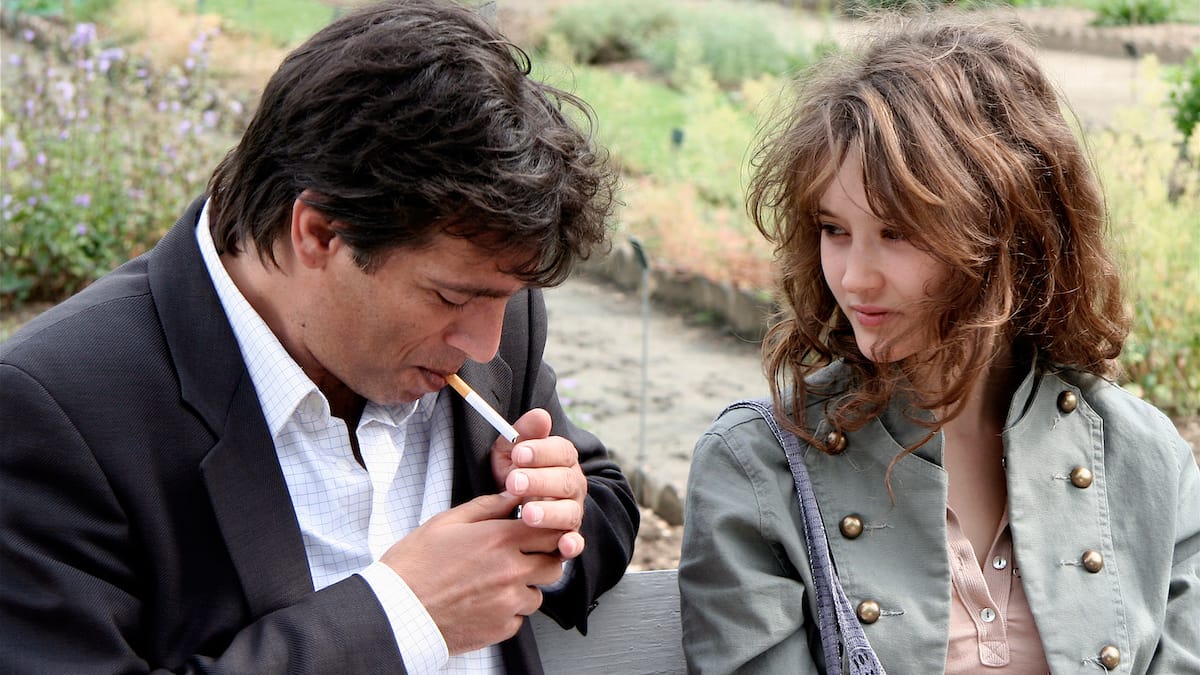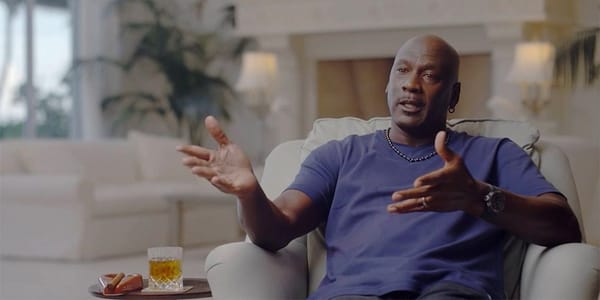All is Forgiven

Mia Hansen-Løve's characters are all saved by her empathy for them
It has always been a somewhat difficult and elusive task, attempting to describe precisely what is so distinctive and unique about the works of French filmmaker Mia Hansen-Løve. Over the course of just seven feature-length films, and a handful of shorts, she has crafted a body of work that is utterly consistent and instantly recognisable, despite being devoid of any overt aesthetic idiosyncrasies or technical flourishes. Formally speaking, she is a master of naturalistic understatement. And yet as a storyteller, it rarely feels like she’s repeating herself — her protagonists range from the globe-trotting DJ Paul Valée in Eden (2014), to the newly-divorced philosophy professor played by Isabelle Huppert in Things To Come (2016), to the suicidal film producer in Father of My Children (2009) and Lola Créton’s love-struck teenager who carries the narrative in Goodbye, First Love (2011). Even her debut feature All Is Forgiven (2007), made when the writer-director was just twenty-five years old and which documents the decline and redemption of Paul Blain’s drug-addled poet, was already the product of a fully-formed filmmaker — carrying all the (subtle but present) stylistic and thematic traits that would continue through to her most recent effort Bergman Island (2020). If there is one preoccupation that can be said to be the most prominent throughout all her works, it is that of empathy — an overwhelming and profound empathy for all the characters presented on screen, despite their considerable flaws and foibles, no matter how peripheral they are to the main plot. There are no villains in the films of Mia Hansen-Løve, only human beings struggling to adapt to their changing circumstances with varying degrees of resistance and success.
The daughter of Parisian philosophy professors, Hansen-Løve appeared as a teenager in two of Olivier Assayas’ most notable films — Late August, Early September (1998) and Sentimental Destinies (2000) –– and initially set out to study at the Conservatory of Dramatic Arts in Paris, before abandoning her acting career to write film reviews for the seminal publication Cahiers du cinéma. It was while working at this magazine that her desire to make films grew, and she directed a series of increasingly accomplished shorts including Après mûre reflexion (2003), Un pur esprit (2004), Offre Spéciale and Contre-coup (2005) starring a young Louis Garrel. One cannot help but suspect that her background as an actor has informed her practice as a screenwriter, for her films are uniformly character-driven in the truest sense of the term — following a single protagonist, often over an extended period of time, punctuated by considerable temporal ellipses, with the main character usually appearing in every single scene. The performances are nuanced and subtle, eschewing any melodramatic displays of emotion — with major transitions and events often occurring off-screen. These characters are presented in a non-judgemental but unsentimental light, and we are often forced to follow them through extended periods of poor decision-making and decline: Victor’s slow descent into heroin addiction in All Is Forgiven; Paul Valée’s similar struggles with cocaine dependency and financial insolvency in Eden; film producer Grégoire Canvel’s inexorable journey towards suicide as he struggles to hold his production company together in Father of My Children. In a few startling instances, this main character disappears from the plot altogether –– as in the case of Grégoire Canvel, whose presence is cut short by death — and the narrative focus seamlessly leapfrogs to his wife as she dutifully picks up the pieces in the aftermath of this tragic midpoint, holding the remnants of their family and his production company together for as long as possible. Similarly in All Is Forgiven, our sympathies are transferred halfway through from the doomed poet Victor to his now-teenaged daughter Annette (in an astonishing debut performance from Marie-Christine Friedrich) as she faces the prospect of reconnecting with her father who, following an eleven-year absence during which time he has gotten clean, is now attempting to regain her trust and build a tentative new relationship.
Perhaps much of the gentleness with which Hansen-Løve treats her characters comes from the intimate autobiographical origins that most of her projects are rooted in. Goodbye, First Love was reportedly inspired by her own experiences of adolescent heartbreak, which may account for the utter lack of condescension it holds towards the powerful hold of young love. We watch Camille over the better part of a decade as she struggles in vain to shake the allure of her relatively mediocre first boyfriend Sullivan, despite a flourishing architectural career and far more attractive romantic prospects. The final image of Camille desperately swimming downriver, chasing after a straw hat he gave her when they were just fifteen, is simultaneously frustrating, hilarious and tragic — and one imbued with unconditional love for this fallible character. Similarly the epic Eden, which unfolds over the course of nearly three hours (and twelve years), tells the story of a French house DJ who fails to attain the success or financial prosperity of his musical peers such as Daft Punk — a story directly inspired by her brother Sven’s career and life experiences. Meanwhile Things To Come, which depicts the divorce of middle-aged philosophy professor Nathalie Chazeaux, and her subsequent embracing of the newfound independence this breakup affords her, was inevitably informed by her parents own divorce when Hansen-Løve was in her early twenties; whilst the fictional film producer in Father of My Children was openly acknowledged to be a very thinly-veiled depiction of Hansen-Løve’s early mentor Humbert Balsan, the legendary head of Ognon Pictures who hung himself in 2005 after a lengthy battle with depression and financial difficulties. It is worth mentioning that the generosity afforded to the protagonists is always extended to the supporting characters, even those in a superficially antagonistic role –– such as Tim Roth’s arrogant film director Tony Sanders in Bergman Island. What could have easily become a bitter caricature of her ex-partner Oliver Assayas is instead a beautifully nuanced portrait of a somewhat entitled, vain and self-absorbed artist, but one still driven by a true passion for their craft and cinematic history.
For all her naturalistic stylings and formal understatement, there is one particular camera movement that Hansen-Løve employs extensively throughout all her films, and one that openly invites the viewer into a particularly strong identification with the character presented on-screen. In essence it is a simple track-and-pan, always beginning with a medium-wide shot of the main character in motion — usually moving from left to right across the screen, as if reading words off the page of a novel. As the character walks (often at pace, her characters tend to hurry through life), the camera follows them closely with a seamless panning motion –– gently tracking backwards if necessary, depending on the length of the walk, but never approaching the self-conscious displays of something like Godard’s Week-end (1967). The focus remains perfectly sharp on the actor as they move through the landscape, and the framing always keeps them perfectly in the centre of the frame. This technique is repeated constantly throughout each of her films, as we track the protagonists across various locations, often over the course of many years, through all their personal trials and tribulations. It is a subtle technique, and much of the technical mastery comes from attempting to disguise the movement’s presence as much as possible — the focus pulling is gentle but precise, the panning and dolly motions always impeccably smooth — the craftsmanship so refined as to be almost invisible. And yet the cumulative effect is quite profound. By consistently keeping these characters literally in the middle of the screen, our sympathies are undoubtedly aligned with them, through thick and thin. We follow Annette through the corridors of her high school as she is about to be contacted by a father she hasn’t seen in eleven years. We follow Nathalie through the Parc des Buttes-Chaumont as she processes the breakdown of her marriage of twenty-five years. We follow Paul Valée as he approaches the underground rave that will first expose him to the house music that will come to consume his young adulthood. We follow Vicky Krieps as she explores Bergman’s house on the island of Fårö preparing to write her latest script. We follow Camille through the streets of Paris as she goes to meet her long-lost love. We follow Grégoire down a rocky path in the south of France as he prepares to take his own life. We stay with these characters, in the face of their mistakes and contradictions, through triumphs and defeats. As ever with Hansen-Løve, it is an understated technique, un-showy, almost painfully tasteful. And yet within the cinematic language, it is the ultimate act of empathy.




